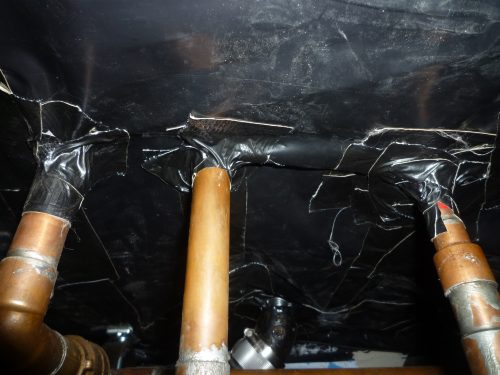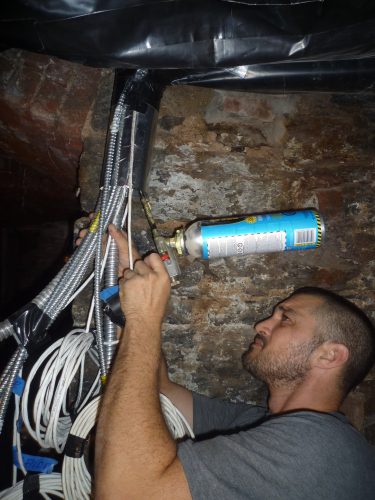In green construction, the largest monetary gain in energy saving over a buildings life-time is achieved with a relatively small investment in sealing the building envelope. As a green design and building firm, we try to adhere closely to Passive House Guidelines, creating extremely well-insulated, virtually air-tight buildings that protect the occupants the most from the outside environment.
Even though the cost is relatively small compared to the savings, it is actually very difficult to determine the method that is most effective in establishing solid separation between the outside environment and the inside of your home. Every human wants a home that is best at keeping the rain and wind out, and the best at maintaining a comfortable temperature during the changing seasons, but making that happen to the high green building Passive House standard is quite a task.
More than insulation, doors, windows or heating systems, an airtight envelope makes the biggest difference between a warm home and a drafty cold one. Likewise, such air seals often double as humidity barriers too.
Though it may be tempting to jump to high VOC adhesives, sealants and tapes as an air seal to achieve the desired effect, BuildingGreen.com has a great series of articles that advise otherwise.
Before thinking about adhesives it is important to focus on the architectural aspects of a building that can help it protect the
inhabitants. Drawing inspiration from fisherman’s storm gear, many buildings can successfully deter rainwater through the utilization of simple weatherlaps like overhangs. The basic message is physics trumps chemistry over time. As a green contractor we like this because it reduces the use of chemicals (glue etc).
Yet, rough weather can sometimes negate the effect of weatherlaps so other sealing methods must be employed. In this case, GreenSpec Insights recommends additionally using gravity and mechanical fastening as the second line of defense. Typically fasteners, gaskets and cleats can be effective barriers by aiding weatherlaps to make continuous contact from one barrier to the next.
If the aforementioned techniques do not get the job done, GreenSpec Insights suggests for the use of sealants. In such circumstances, it is important to define your options; adhesives, sealants, mastics and putties are not all created equal. Some of the low VOC water based adhesives are not as long lasting as the toxic alternative. This leaves us in a predicament to determine which is the most effective strategy for applying adhesives.
Here are the positive impacts that low or no VOC adhesive and sealers can have:
opens the door to additional business and increased margins
- easier to dispose of
- low odor during application; no odor once cured
- reduces landfill, groundwater and ozone depleting contaminants.
- reduced toxins benefit everyone, including those with allergies and chemical sensitivities
- improved worker safety and health.
- reduced incidents of eye and respiratory irritation
- no symptoms of “sick building” syndrome such as headaches and fatigue
As a NY Green Contractor, we use no or low VOC in all of our adhesives, sealers, and paints because it follows closely with our green building principles. Our experience is mostly with residential brick brownstones. On the inside we run an air barrier with no or low VOC sealant along the front and back walls. This seals the exposed walls.
The walls that are connected to the buildings on each side of the brownstone are not such a concern for air sealing because these spaces are occupied as well and thus have similar temperatures. We do seal them nonetheless to reduce drafts. Our favorite option is to seal the walls with clay, a beautiful material that also helps in humidity control



